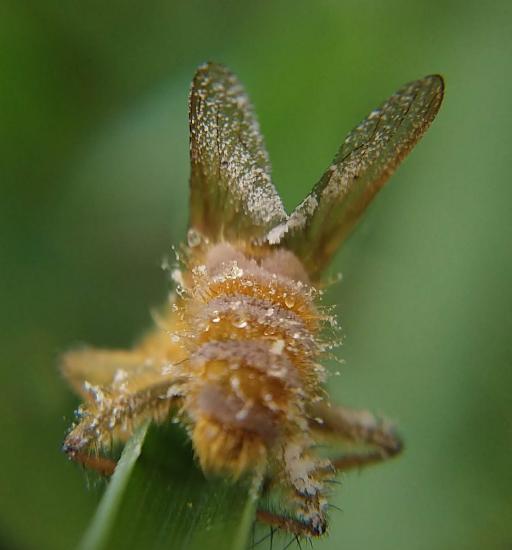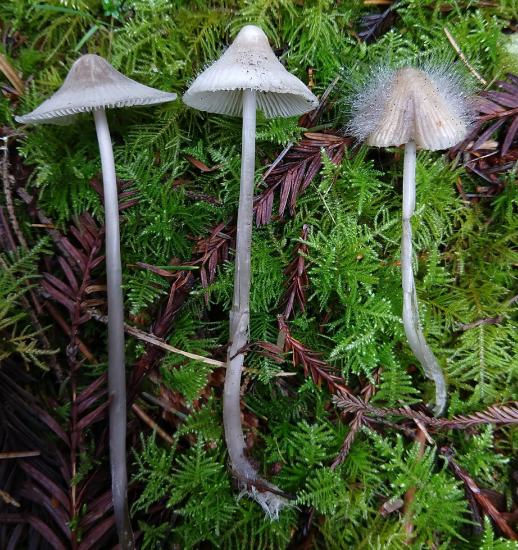3.3: Zygospore-forming Fungi
- Page ID
- 35308
These organisms were formerly classified in a group called the Zygomycota because they sexually reproduce by forming a structure called a zygospore. However, they have since been broken into several different lineages.
Mitosporangium (Asexual Reproduction) and Coenocytic Hyphae
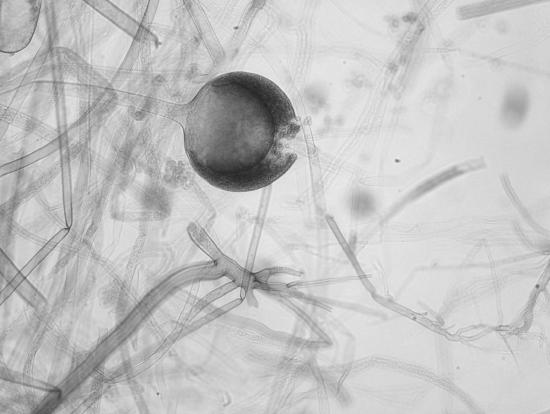
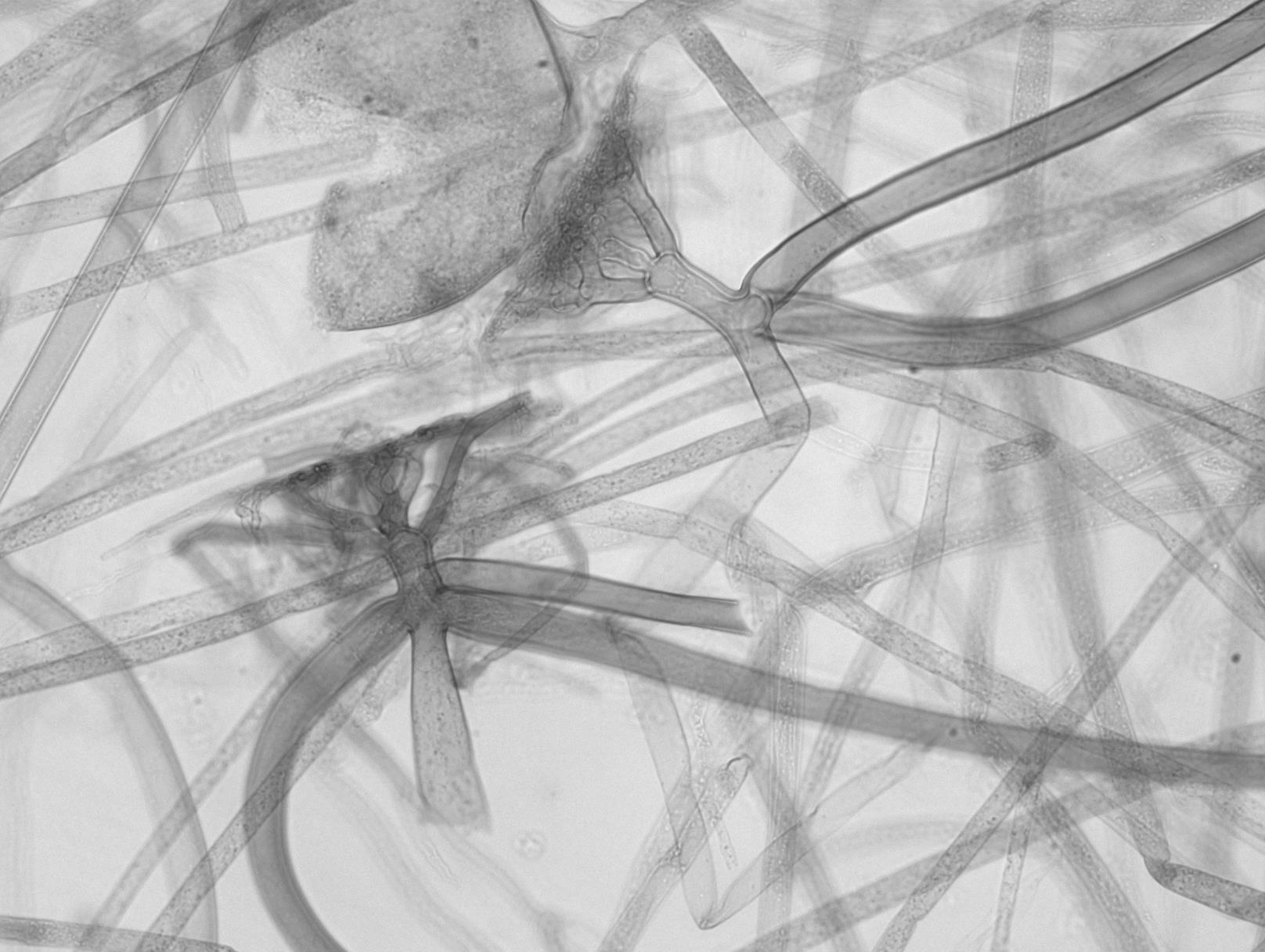
Zygospore Formation
When the mycelium of one fungus encounters another fungus of the same species and a complementary mating type, it can start to produce compounds to interact with the new fungus. Through a series of chemical exchanges, the two fungi each begin to extend toward each other. When they touch, they wall off an area of that extension by creating a septum. This area, filled with haploid nuclei, is called a gametangium (see Figure \(\PageIndex{3}\)). The walls between the gametangia of each fungus dissolve and the two fungi combine cytoplasm (plasmogamy) and then fuse the nuclei together (karyogamy) to form many diploid nuclei. As this happens, a thick, orange, ornamented wall forms around the nuclei. This is the zygosporangium.
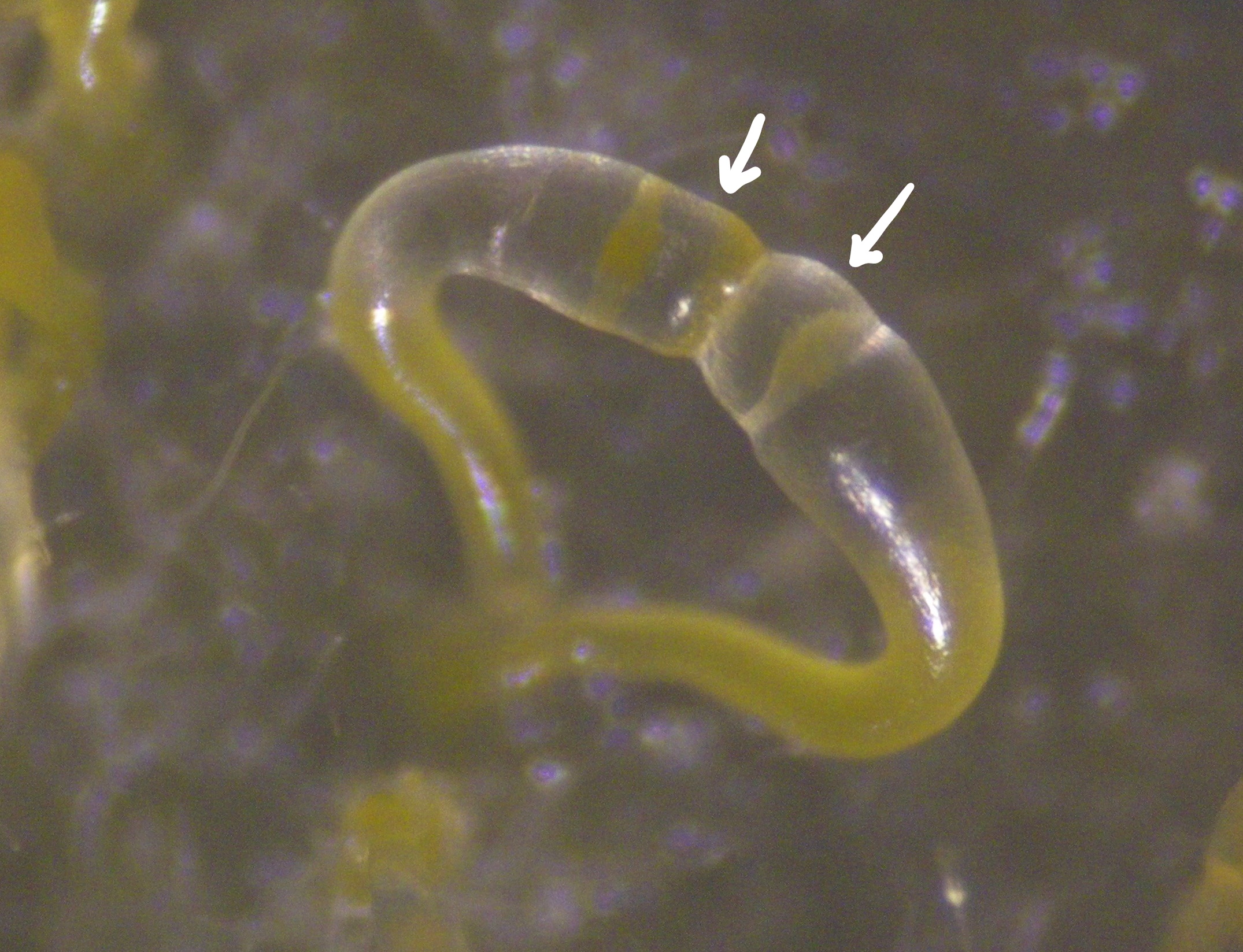
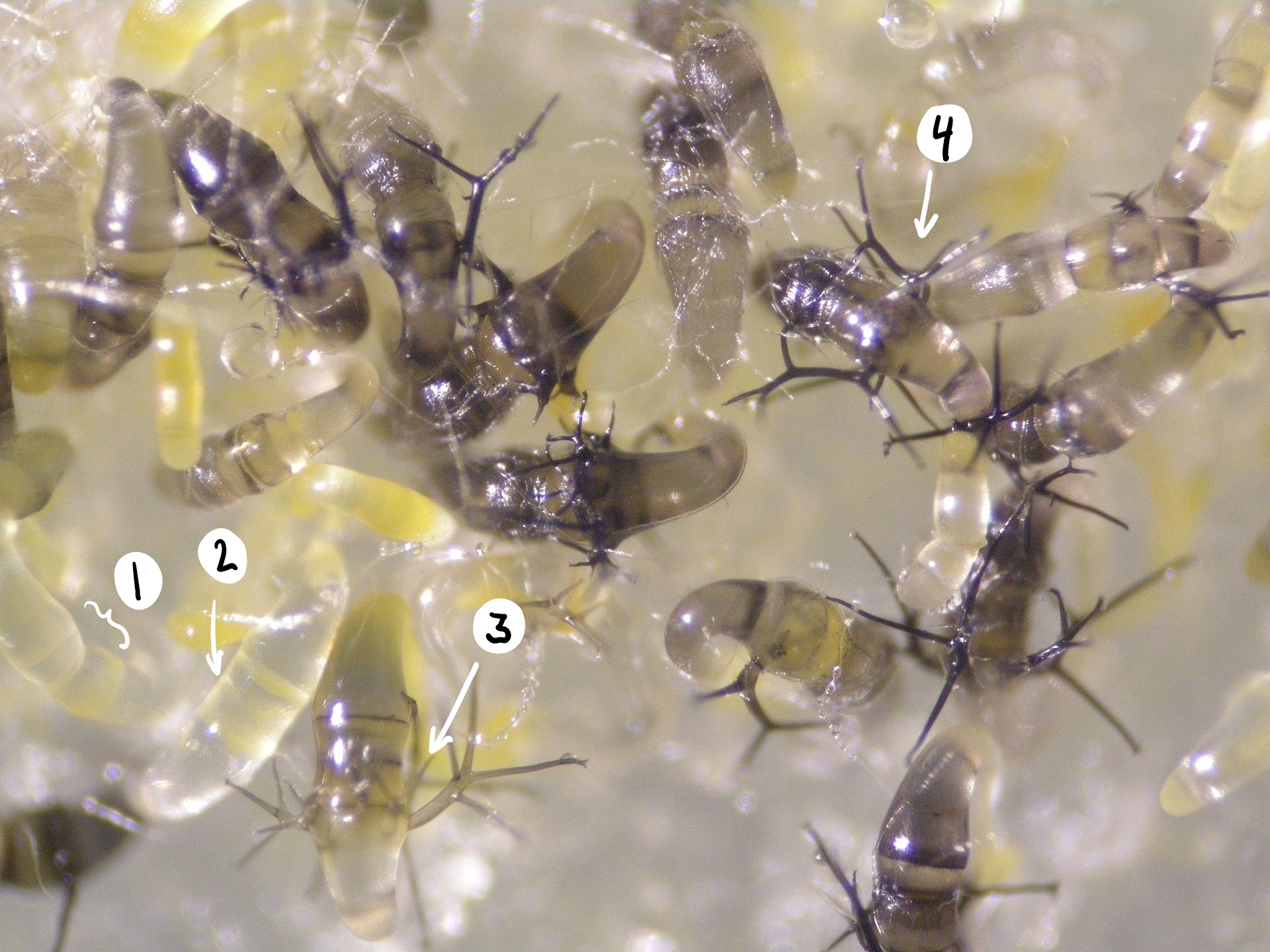
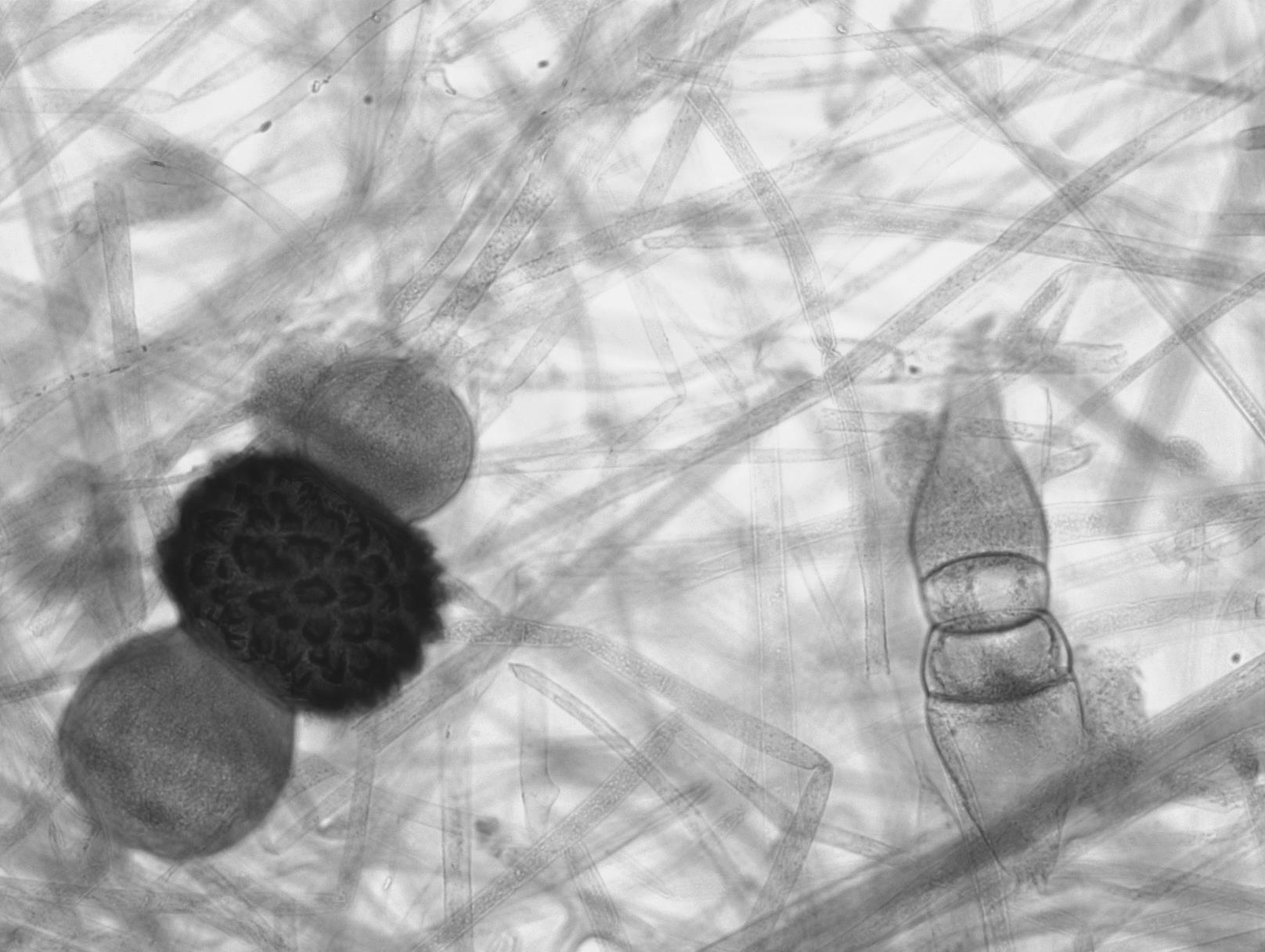
Rhizopus stolonifer Life Cycle
The life cycle below shows both sexual and asexual reproduction in Rhizopus stolonifer. Both sexual and asexual reproduction result in the production of haploid spores that can germinate and grow into a haploid mycelium. However, the spores produced by the mitosporangia will all be genetically identical, while the spores produced by the sporangia emerging from the zygosporangium will be genetically distinct.
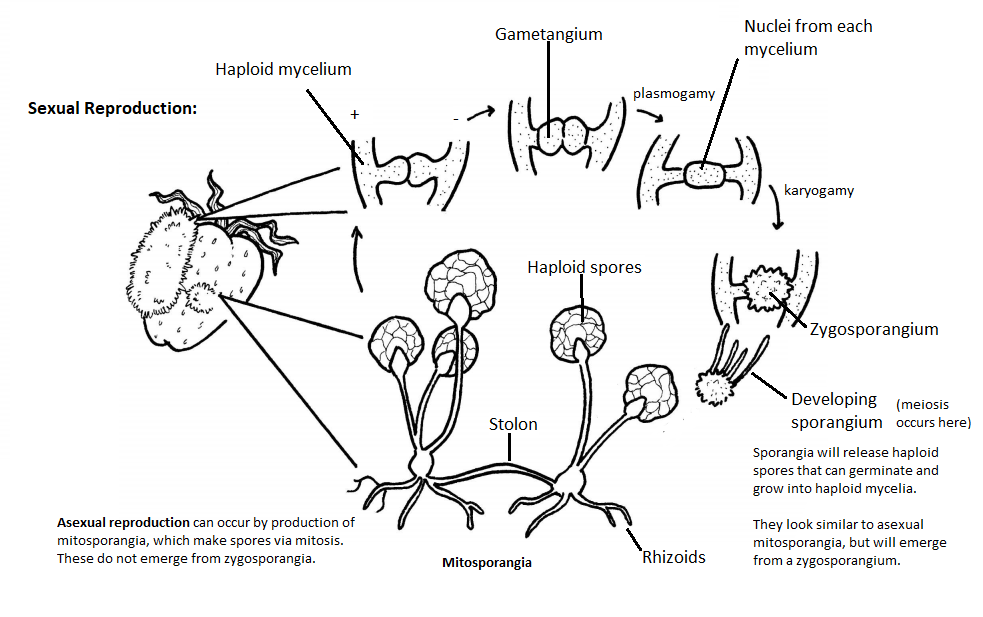
Watch the video below to see the microscopic structures involved in the asexual portion of the life cycle of Rhizopus stolonifer.
- 0:50 The video starts, showing coenocytic hyphae growing
- 1:25 Mitosporangium formation (asexual reproduction)
- 2:00 Mitospores, haploid spores produced via mitosis, are shown
- 2:30 Video ends
Video \(\PageIndex{1}\): Asexual structures of Rhizopus stolonifer. Sourced from YouTube.
Examples of Zygospore-forming Fungal Lineages
These groups of fungi can be found in your daily life, if you know what to look for. Molds on fruits and bread are often (but certainly not always) from the Mucorales, as well as molds that form on dog poop (specifically, a genus called Phycomyces). You can also find a diverse assortment of former "Zygomycota" members parasitizing other fungi and insects.
